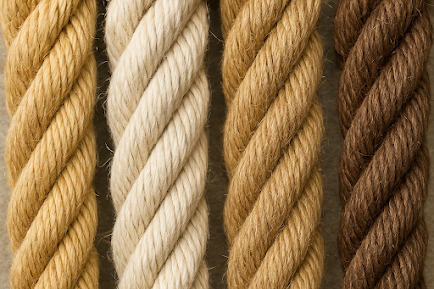✓ Origin
• Natural Fibers:
Source: Derived from plants, animals, or minerals.
Examples:
Plant-based: Cotton (cotton plant), Linen (flax plant), Jute, Hemp.
Animal-based: Wool (sheep), Silk (silkworms), Alpaca, Cashmere (goats).
Mineral-based: Asbestos (very rarely used now due to health hazards).
• Synthetic Fibers:
Source: Man-made using chemical processes, mainly from petroleum-based products (plastics, polymers).
Examples: Polyester, Nylon, Acrylic, Spandex, Rayon (semi-synthetic from cellulose).
✓ Production Process
Natural Fibers:
Extracted by harvesting, shearing, or processing natural sources.
Minimal chemical processing (sometimes cleaned, carded, spun).
Labor-intensive and weather-dependent.
Synthetic Fibers:
Created in factories via chemical reactions.
Typically involve polymerization — linking small molecules into large chains.
Fibers are spun from chemical solutions or melts into threads.
✓ Properties of Natural Fibers & Synthetic Fibers
✓ Environmental Impact
Natural Fibers:
Biodegradable, renewable.
However, farming natural fibers (like cotton) can require high water use, pesticides, and land.
Sheep farming for wool contributes to methane emissions.
Synthetic Fibers:
Non-biodegradable — major cause of microplastic pollution in oceans.
Made from non-renewable resources (petroleum).
Energy-intensive production.
✓ Cost
Natural fibers are usually more expensive to produce (labor, slower process).
Synthetic fibers are generally cheaper and mass-produced easily.
✓ Uses
Natural Fibers:
Clothing (cotton shirts, wool sweaters, silk dresses).
Home textiles (linen tablecloths, cotton bedsheets).
High-end fashion and traditional garments.
Synthetic Fibers:
Sportswear (due to elasticity and moisture-wicking).
Carpets, upholstery, industrial applications.
Raincoats, swimwear (because they dry fast and resist water).
✓ Examples and Comparison
Fiber Type Example Product
Cotton (natural) T-shirts, jeans
Silk (natural) Sarees, ties
Wool (natural) Winter coats, scarves
Polyester (synthetic) Sports jerseys, bags
Nylon (synthetic) Ropes, parachutes
Acrylic (synthetic) Knitted sweaters (cheaper than wool)
Summary
Natural fibers are eco-friendly, breathable, and comfortable, but can be more costly and require care.
Synthetic fibers are durable, cheap, and versatile but are harmful to the environment and sometimes less comfortable for long-term wear.









0 Comments